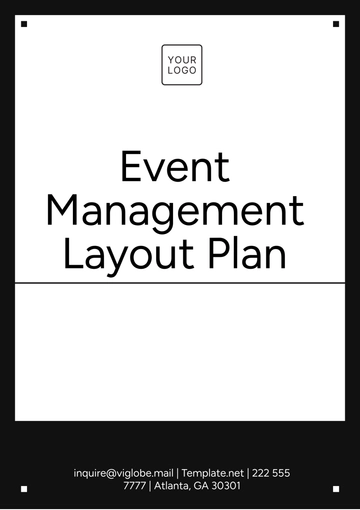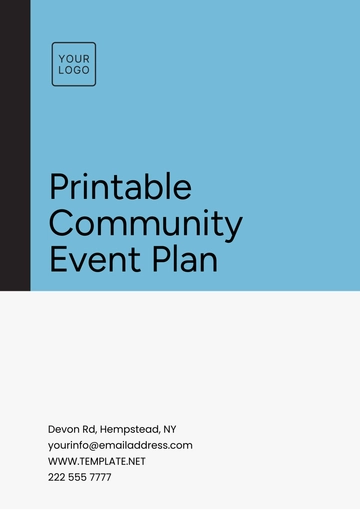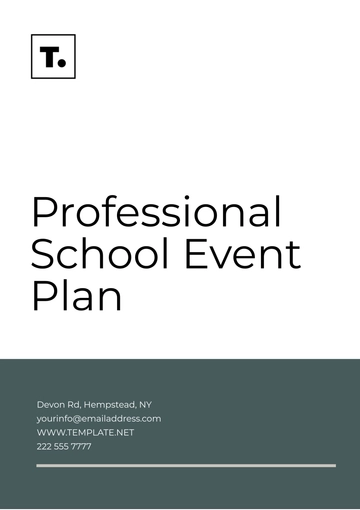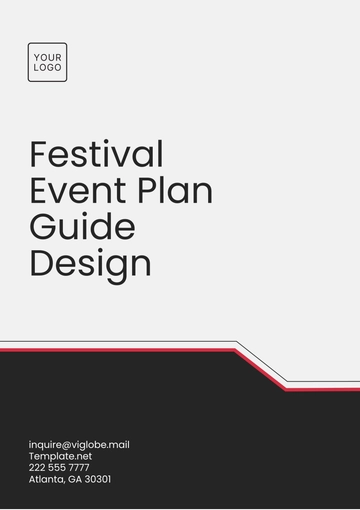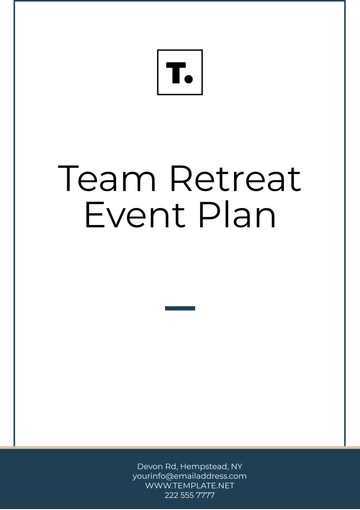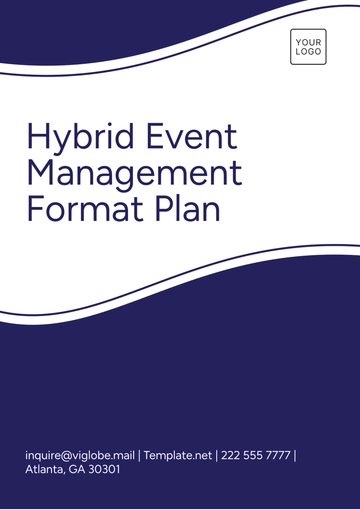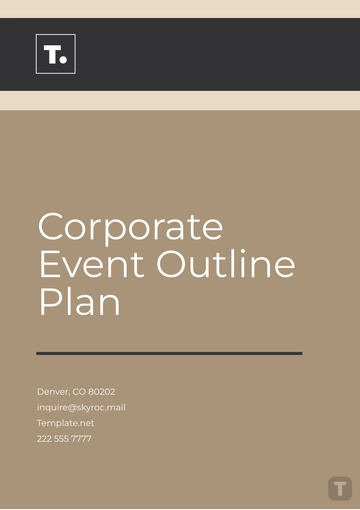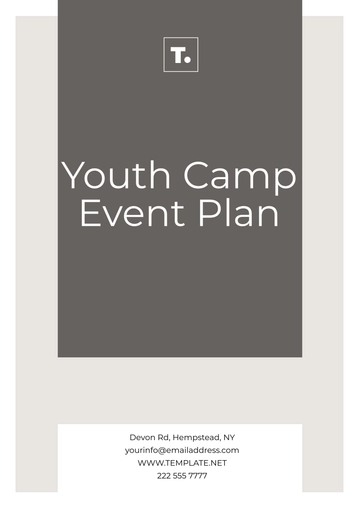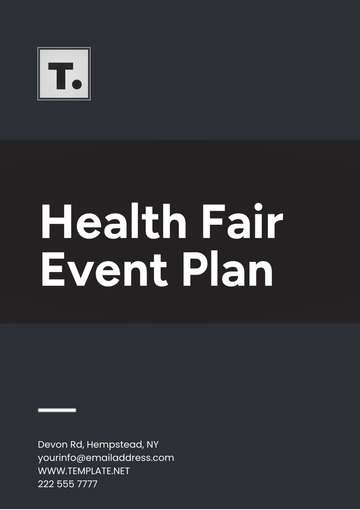Free Event Safety Plan
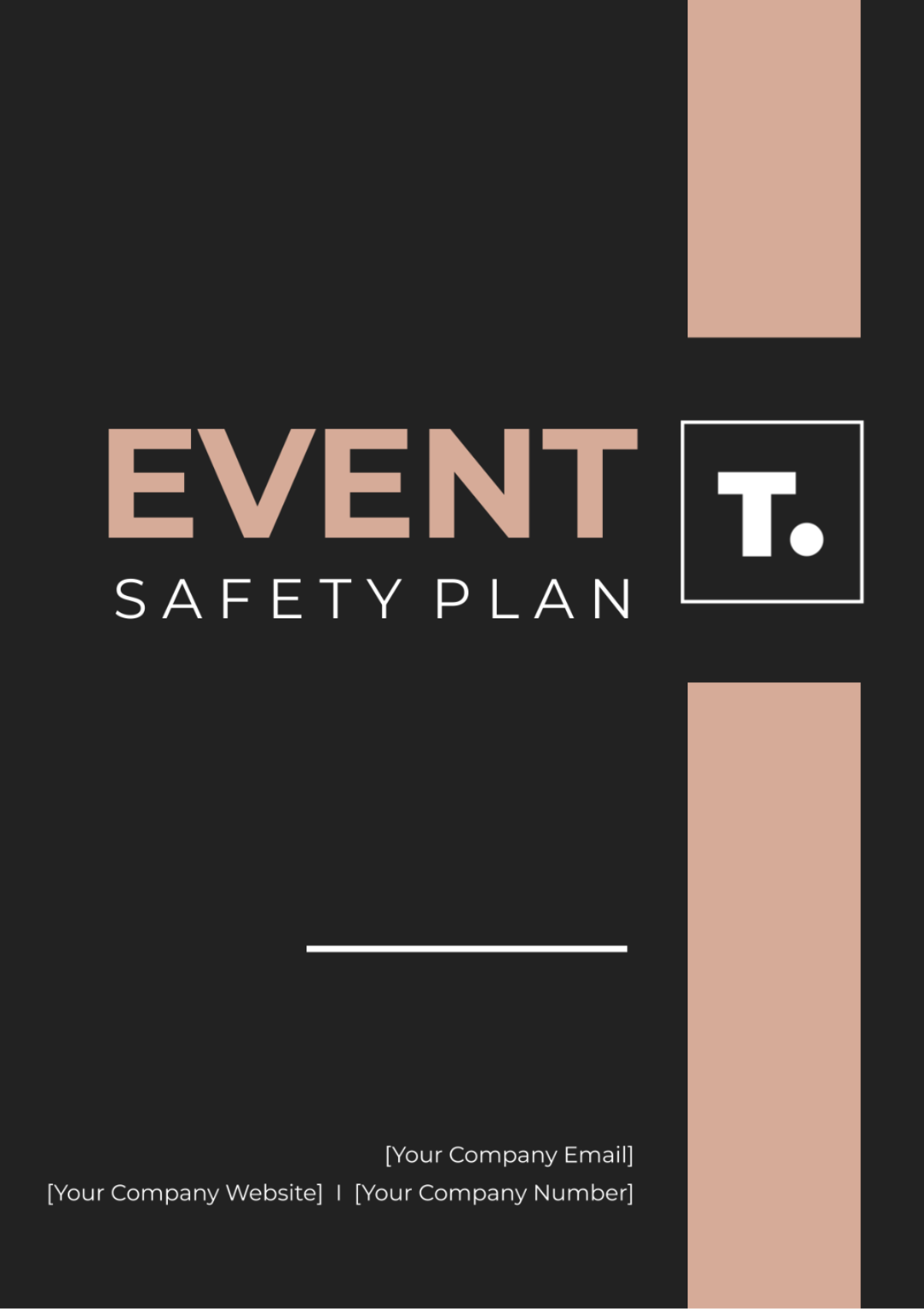
Written by: [Your Name]
_____________________________________________________________________________________
_____________________________________________________________________________________
Event Name: | [Event Name] |
Date: | [Date] |
Location: | [Address] |
Event Organizer: | [Event Organizer's Name] |
I. Introduction
Purpose: The purpose of this Event Safety Plan is to ensure the safety and well-being of all participants, staff, and attendees during the Event, scheduled to take place on [Date] at [Venue].
Scope: This safety plan encompasses all aspects of the event, including but not limited to venue safety, crowd management, emergency procedures, and communication protocols.
Responsibilities:
Responsible for developing and implementing this safety plan.
All event staff and volunteers are responsible for familiarizing themselves with and adhering to the protocols outlined in this plan.
Appointing designated safety officers to oversee the implementation of safety measures during the event.
II. Roles and Responsibilities
Event Organizer
Overall responsibility for the safety and security of the event.
Ensuring compliance with all relevant regulations and standards.
Safety Officer
Developing and implementing the Event Safety Plan.
Conducting risk assessments and implementing risk control measures.
Overseeing emergency procedures and response protocols.
Medical Team
Providing first aid services and medical assistance as needed.
Establishing first aid stations and medical response teams throughout the venue.
Security Personnel
Ensuring the physical security of the venue and its attendees.
Monitoring for any security threats or incidents and responding accordingly.
Communication Team
Managing communication channels during the event, including PA systems, radios, and mobile alerts.
Disseminating emergency information and instructions to staff and attendees.
Volunteers
Assisting with crowd management, wayfinding, and attendee assistance.
Reporting any safety concerns or incidents to the appropriate authorities.
III. Risk Assessment
A. Hazards Identification
Physical Hazards
Tripping hazards such as cables or uneven surfaces.
Biological Hazards
Spread of contagious diseases, such as flu or COVID-19.
Environmental Hazards
Extreme weather conditions, including heatwaves or storms.
Security Hazards
Potential for theft, vandalism, or violence.
B. Risk Analysis
Likelihood
Assess the likelihood of each hazard occurring.
Consequence
Evaluate the potential consequences of each hazard.
C. Risk Control Measures
Implementing crowd control barriers to manage pedestrian flow.
Providing hand sanitizing stations throughout the venue.
Conducting regular safety inspections to identify and mitigate hazards.
Hiring security personnel to ensure the safety of attendees and prevent unauthorized access.
IV. Emergency Procedures
Medical Emergencies
Designate first aid stations staffed by trained medical personnel.
Establish protocols for responding to medical emergencies, including calling emergency services and administering basic first aid.
Evacuation Procedures
Develop evacuation routes and assembly points.
Conduct regular evacuation drills to familiarize staff and attendees with procedures.
Communication Protocols
Establish a chain of command for disseminating emergency information.
Provide multiple communication channels, including PA systems and mobile alerts.
V. Event Staff Training
Safety Briefings
All event staff and volunteers will receive comprehensive safety briefings prior to the event.
Role-Specific Training
Staff members will receive role-specific training on emergency procedures, crowd management, and customer service.
Documentation
Maintain records of staff training sessions and certifications.
VI. Post-Event Evaluation
Debriefing
Conduct a post-event debriefing session to review the effectiveness of safety measures and identify areas for improvement.
Feedback
Gather feedback from staff, attendees, and stakeholders to assess their perception of safety and identify any issues or concerns.
Documentation
Document lessons learned and update the safety plan accordingly for future events.
VII. Review and Improvement
Review Process
Schedule regular reviews of the Event Safety Plan to assess its effectiveness and identify areas for improvement.
Involve key stakeholders, including event organizers, staff, and relevant authorities, in the review process.
Continuous Improvement
Implement necessary changes and updates based on feedback, lessons learned, and emerging safety standards.
Ensure that all stakeholders are informed of any revisions to the safety plan.
Documentation
Maintain a record of all reviews and improvements made to the safety plan for reference and transparency.
- 100% Customizable, free editor
- Access 1 Million+ Templates, photo’s & graphics
- Download or share as a template
- Click and replace photos, graphics, text, backgrounds
- Resize, crop, AI write & more
- Access advanced editor
Discover peace of mind with Template.net's Event Safety Plan Template. Fully editable and customizable, this essential tool ensures your event is prepared for any scenario. Effortlessly tailor your safety measures to fit your unique needs, all with the convenience of editing in our AI tool. Safety made simple.
You may also like
- Finance Plan
- Construction Plan
- Sales Plan
- Development Plan
- Career Plan
- Budget Plan
- HR Plan
- Education Plan
- Transition Plan
- Work Plan
- Training Plan
- Communication Plan
- Operation Plan
- Health And Safety Plan
- Strategy Plan
- Professional Development Plan
- Advertising Plan
- Risk Management Plan
- Restaurant Plan
- School Plan
- Nursing Home Patient Care Plan
- Nursing Care Plan
- Plan Event
- Startup Plan
- Social Media Plan
- Staffing Plan
- Annual Plan
- Content Plan
- Payment Plan
- Implementation Plan
- Hotel Plan
- Workout Plan
- Accounting Plan
- Campaign Plan
- Essay Plan
- 30 60 90 Day Plan
- Research Plan
- Recruitment Plan
- 90 Day Plan
- Quarterly Plan
- Emergency Plan
- 5 Year Plan
- Gym Plan
- Personal Plan
- IT and Software Plan
- Treatment Plan
- Real Estate Plan
- Law Firm Plan
- Healthcare Plan
- Improvement Plan
- Media Plan
- 5 Year Business Plan
- Learning Plan
- Marketing Campaign Plan
- Travel Agency Plan
- Cleaning Services Plan
- Interior Design Plan
- Performance Plan
- PR Plan
- Birth Plan
- Life Plan
- SEO Plan
- Disaster Recovery Plan
- Continuity Plan
- Launch Plan
- Legal Plan
- Behavior Plan
- Performance Improvement Plan
- Salon Plan
- Security Plan
- Security Management Plan
- Employee Development Plan
- Quality Plan
- Service Improvement Plan
- Growth Plan
- Incident Response Plan
- Basketball Plan
- Emergency Action Plan
- Product Launch Plan
- Spa Plan
- Employee Training Plan
- Data Analysis Plan
- Employee Action Plan
- Territory Plan
- Audit Plan
- Classroom Plan
- Activity Plan
- Parenting Plan
- Care Plan
- Project Execution Plan
- Exercise Plan
- Internship Plan
- Software Development Plan
- Continuous Improvement Plan
- Leave Plan
- 90 Day Sales Plan
- Advertising Agency Plan
- Employee Transition Plan
- Smart Action Plan
- Workplace Safety Plan
- Behavior Change Plan
- Contingency Plan
- Continuity of Operations Plan
- Health Plan
- Quality Control Plan
- Self Plan
- Sports Development Plan
- Change Management Plan
- Ecommerce Plan
- Personal Financial Plan
- Process Improvement Plan
- 30-60-90 Day Sales Plan
- Crisis Management Plan
- Engagement Plan
- Execution Plan
- Pandemic Plan
- Quality Assurance Plan
- Service Continuity Plan
- Agile Project Plan
- Fundraising Plan
- Job Transition Plan
- Asset Maintenance Plan
- Maintenance Plan
- Software Test Plan
- Staff Training and Development Plan
- 3 Year Plan
- Brand Activation Plan
- Release Plan
- Resource Plan
- Risk Mitigation Plan
- Teacher Plan
- 30 60 90 Day Plan for New Manager
- Food Safety Plan
- Food Truck Plan
- Hiring Plan
- Quality Management Plan
- Wellness Plan
- Behavior Intervention Plan
- Bonus Plan
- Investment Plan
- Maternity Leave Plan
- Pandemic Response Plan
- Succession Planning
- Coaching Plan
- Configuration Management Plan
- Remote Work Plan
- Self Care Plan
- Teaching Plan
- 100-Day Plan
- HACCP Plan
- Student Plan
- Sustainability Plan
- 30 60 90 Day Plan for Interview
- Access Plan
- Site Specific Safety Plan




